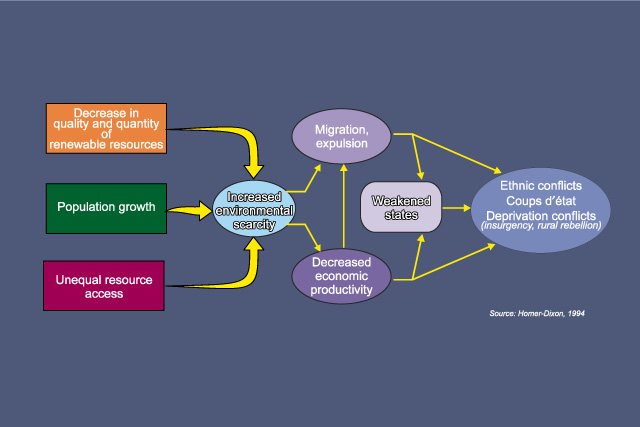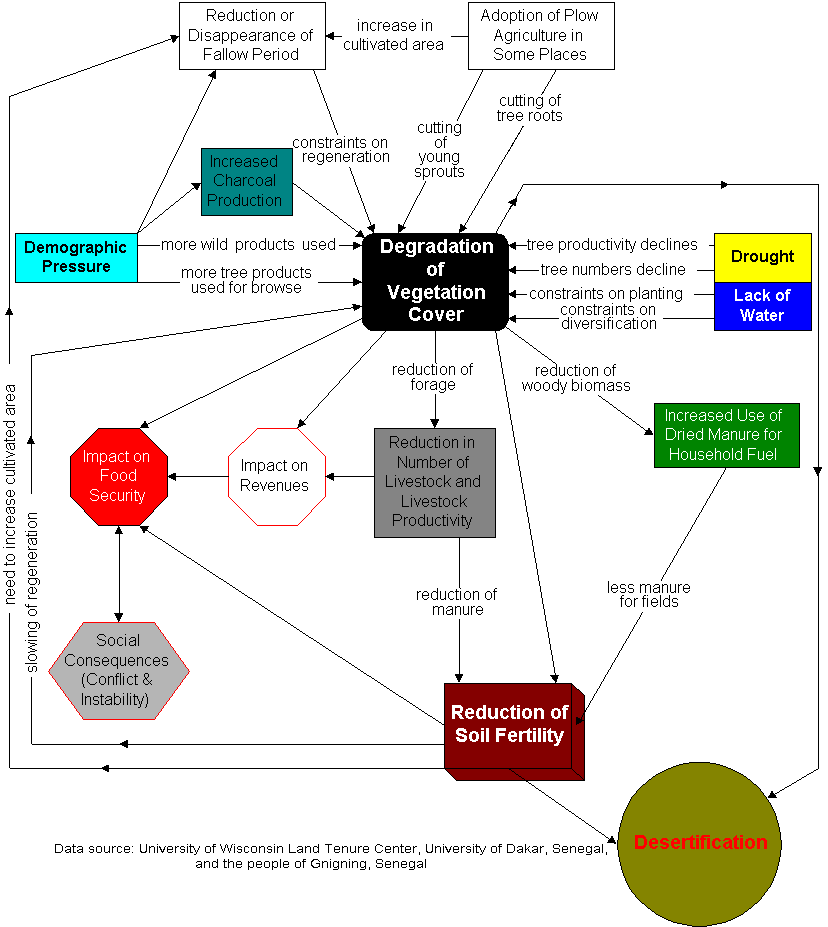



Bryceson, D.F., 1990. Food Insecurity and the Social Division of Labour in Tanzania, 1919-85. London: The Macmillan Press.
Homer-Dixon, T.F., 1994. Environmental scarcities and violent conflict: evidence from cases. International Security 19:1, 5-40.
Keller, E.J., 1992. Drought, war, and the politics of famine in Ethiopia and Eritrea. Journal of Modern African Studies 30:4, 609-624.
Olsson, L., 1993. On the causes of famine – drought, desertification and market failure in the Sudan. Ambio 22:6, 395-403.
Samafar, A.I., 1992. Destruction of state and society in Somalia: Beyond the tribal convention. Journal of Modern African Studies 30:4, 625-641.
The Table of Contents of my work on Sahelian food security, including several potential loci of intervention to mitigate environmental insecurity, is available.
 Back
Back  Top
Top
This site last updated April 7, 1998.